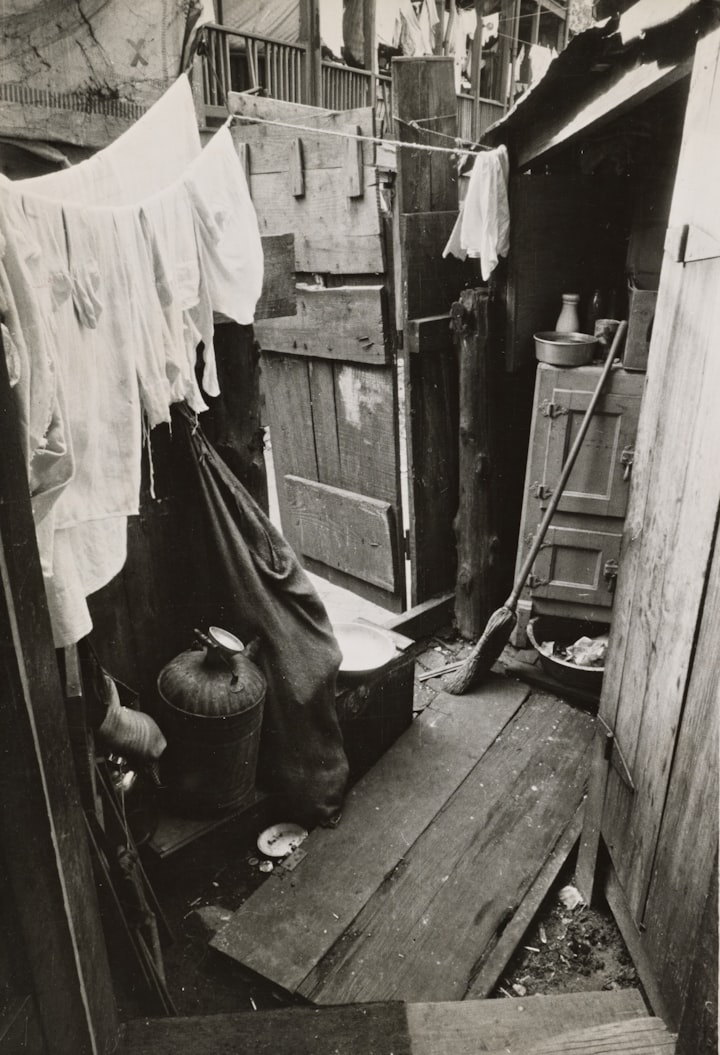CRIME IN VICTORIAN LONDON
She burnt the meat and bones but kept the body fat which she sold as finest dripping.

In the mid-19th century, British society was facing momentous turmoil and social instability. Growing urbanisation had led to filthy conditions in London. The gas-lit streets hid dark truths. Crime was normal, from pick-pocketing and burglary to murder and affray. Drunkenness was widespread and vice was effortlessly available.
Associated with dark alleys, street urchins, misty rivers, and men in top hats and cloaks who stalked the gas-lit courts. No city of the day faced difficulties on the scale London did. Issues, including overcrowding, pollution, prostitution, and disease. Were a devastating presence in the lives of many Londoners.
From the fear of being strangled by thieves to tales, the sewers were verminous with a gang of pigs. 19th-century Londoners spent a lot of time living in dread. The Victorian Era saw enormous changes in the social fabric of the city's jurisdiction.
In 1811, there was a brutal multiple murder in the East End of London, which fetched about a debate about policing in London. Until then, they had enforced the law, with variable degrees of competence, by voluntary officers and watchmen selected by each parish. In1829, Sir Robert Peel’s London police force was founded and became the model for other police forces in the country.
Amid the vast crowded slums, there was a flourishing criminal underbelly, and menace lurked in every corner. In the 1850s and 1860s, there were panics regarding street robbery, known as ‘garrotting.’ A toxic press movement against ‘garrotters’ developed following the mugging of an MP on his way home from a night sitting of parliament. Hugh Pilkington, a Liberal MP for Blackburn, was strolling home from the Commons when he was attacked, beaten and fleeced. The press then upped its coverage on the street violence and the public panicked, imagining criminals were stalking the streets, looking for victims.
Most lawbreakers were adolescent males, but most crimes were thefts. The most common crimes committed by women were related to prostitution and vagrancy. Domestic violence hardly came before the magistrates. It was committed to the secrecy of home. Between some working-class neighbourhoods, it continued to have tolerance. While amid other classes, the exposing of such conduct, especially in the courts, would bring a family’s standing into disgrace.
The press condemned the police and called for prison reform proposals. Their campaign was strong, and the government promptly drew up and passed the Garrotters Act in 1863. The panic was short-lived, and the change to prison reform, choosing deterrence over rehabilitation, guaranteed severe attitudes towards criminality carried on.
Nowadays we know of criminal associations that sell human organs for transplant, but in the Victorian era, there was a grislier equivalent. Most of us know the renowned story of Sweeney Todd, the London barber, with a fondness for killing his clients. Once slaughtered, his acquaintance, Mrs Lovett, made meat pies out of them. While some claim this is a true story, there isn’t a lot of evidence Sweeney Todd existed.
Yet, there is a macabre story, which is true. In 1879, Kate Webster was sacked from her job as a servant to a Mrs Thomas. In vengeance, she murdered her employer with an axel, cut her body to pieces, and boiled it in a large pot. She then burnt the bones and meat but kept the body fat, which she sold as best dripping.
Hard labour in prison involved unpleasant and hopeless tasks. Picking oakum had prisoners sitting all day unscrambling dense, tarry ropes, which initiated bleeding fingers. The crank was a box with a ratcheted grip that was wound for hours. The tread was a massive wheel with foot-treads in a step formation. Prisoners were made to turn it for hours by climbing the moving steps. Other forms of hard labour included moving cannonballs back and forth across the courtyard all day.
They often gave severe penances out for minor offences. In 1888, George Thurgood left a workhouse to find a job. He was arrested and taken to the court and sentenced to fifteen day’s hard labour for searching for work in workhouse attire. In 1871, 14-year-old Isaac Davies was condemned to three months with hard labour for thieving twenty oranges.
There might have been reeking slums and poverty. But there were parts of London that exuded invention and colour. For all the heartbreaks of joblessness, drug abuse and alcoholism. There was also prosperous escapism and a rising middle-class living in beautiful terraces and squares.
About the Creator
Paul Asling
I share a special love for London, both new and old. I began writing fiction at 40, with most of my books and stories set in London.
MY WRITING WILL MAKE YOU LAUGH, CRY, AND HAVE YOU GRIPPED THROUGHOUT.
paulaslingauthor.com






Comments
There are no comments for this story
Be the first to respond and start the conversation.